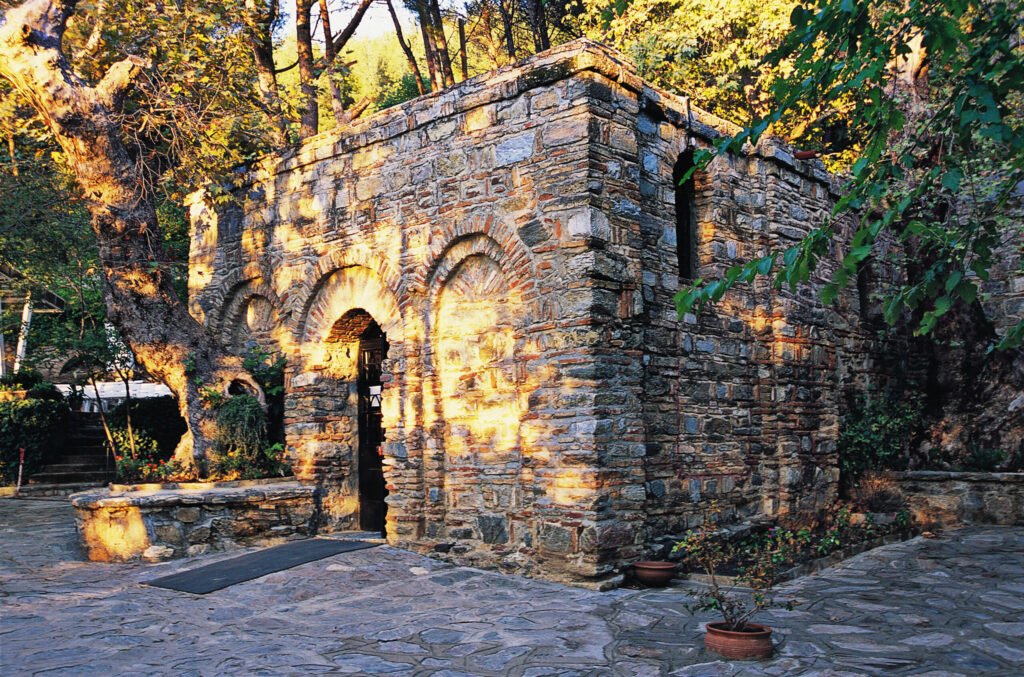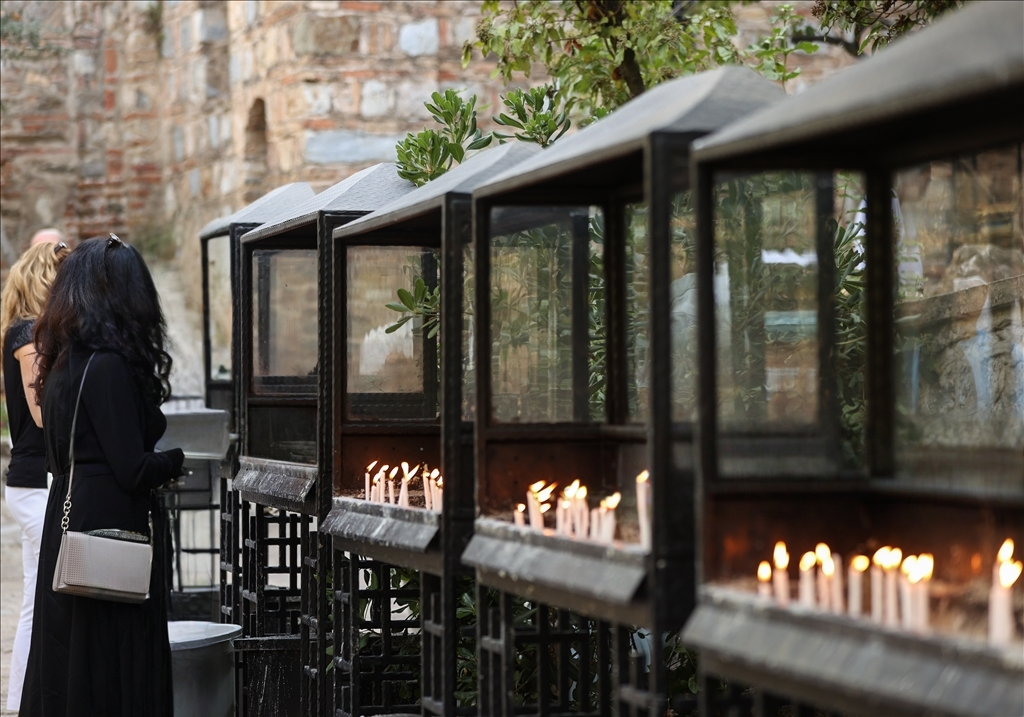
Insights & Articles
House of Virgin Mary Blog – 7 Visit Guides, History & Pilgrimage Tips
House of Virgin Mary Blog is your trusted resource for expert guides, historical insights, and spiritual reflections. Here, you’ll discover carefully researched articles about the sacred site in Ephesus, including Mass times, travel tips, and the traditions of candle lighting and the Wishing Wall. Whether you are planning a pilgrimage, exploring Christian heritage, or seeking inspiration, our blog offers valuable knowledge to enrich your journey and deepen your connection with this holy place.

Mass Times and Rituals
At the House of the Virgin Mary in Ephesus, Mass is celebrated regularly, allowing pilgrims to experience the site not only as a historical landmark but also as a living place of worship. Daily Mass times usually follow a consistent rhythm, with morning and afternoon services offered both on weekdays and weekends. On special feast days such as Easter or the Assumption of Mary (15 August), the liturgy attracts larger congregations, and the atmosphere becomes particularly moving.
In addition to the scheduled Mass, visitors often take part in smaller rituals that make the experience deeply personal. Lighting a candle before entering the chapel, pausing for silent prayer inside the modest stone house, or joining in hymns sung by international pilgrims are all common practices. These acts connect modern visitors to a centuries-old tradition of devotion, reminding them that the sacredness of the site lies not only in its history but in the faith continually renewed there.
For many pilgrims, participating in Mass at the House of the Virgin Mary transforms a simple visit into a profound spiritual journey. The rituals, though simple in form, carry layers of meaning—gratitude, healing, and hope—that resonate long after leaving Mount Koressos.
Travel Guide: How to Reach the House of the Virgin Mary
Reaching the House of the Virgin Mary is an essential part of every pilgrimage to Ephesus, and the journey itself can be just as memorable as the visit. The shrine is located on Mount Koressos, about 9 km from Selçuk, 25 km from Kusadasi, and 74 km from Izmir. Pilgrims have several travel options depending on their budget, timing, and comfort level.
For those seeking convenience, taxis and private transfers are the fastest way to reach the site. They are readily available in Selçuk and Kusadasi, with fares varying by season and distance. If you prefer a more budget-friendly route, dolmuş (shared minibuses) and local buses operate between Selçuk and the main entrance to Ephesus, from where additional shuttles or taxis can take you up the hill. This option allows travelers to experience local culture while keeping costs low.
Another popular choice is rental cars, particularly for visitors arriving from Izmir. The roads are well-paved, and parking is available near the entrance. Driving offers flexibility to combine your visit with nearby attractions such as the Basilica of St. John or the ancient city of Ephesus.
Whichever method you choose, it’s best to plan your arrival in the early morning or late afternoon, when temperatures are cooler and crowds are smaller. This ensures a more peaceful approach to the holy site, setting the tone for a meaningful experience.
Light a Candle: Meaning and Tradition
Lighting a candle at the House of the Virgin Mary is one of the most moving experiences for visitors and pilgrims. This simple act symbolizes prayer, remembrance, and hope. Each flame represents an intention—whether for personal healing, peace for loved ones, or gratitude for blessings already received. In Christian tradition, candles also reflect the presence of divine light, guiding the faithful in times of darkness.
At the shrine in Ephesus, pilgrims pause before the outdoor candle stands to light their small flame, often whispering a prayer or holding a moment of silence. The gentle glow of dozens of candles together creates a powerful atmosphere of unity, where individual wishes combine into a collective offering of faith.
In recent years, the tradition has expanded beyond the physical site. Pilgrims unable to travel to Turkey can now light a candle online, ensuring that distance does not limit their spiritual connection. The act remains the same: to dedicate a flame in the name of peace, healing, or gratitude, linking personal devotion with the universal prayer of millions of believers.
Lighting a candle, whether at the shrine or online, is more than ritual—it is a reminder that even the smallest light can bring hope to the world.
The Wishing Wall: History and Meaning
The Wishing Wall at the House of the Virgin Mary is one of the most recognizable traditions of the shrine. Alongside the sacred chapel and holy springs, this simple stone wall covered with thousands of folded notes has become a symbol of faith, hope, and human connection. Visitors from every corner of the world tie small pieces of paper or cloth, each carrying a handwritten prayer or wish. Over the years, these offerings have transformed the wall into a living testimony of devotion.
The origins of the practice are not fully documented, but it is believed to be a blend of local customs and Christian pilgrimage traditions. Writing down a prayer and leaving it on the wall represents the act of entrusting one’s hopes to God and the intercession of the Virgin Mary. For some, it is a plea for healing or peace; for others, it is gratitude for blessings already received.
Though the messages are private, the sight of countless wishes side by side creates a powerful collective atmosphere. Each slip of paper, no matter how small, reflects the universal human longing for love, health, and happiness. The Wishing Wall thus connects millions of strangers across cultures and generations, making it more than a ritual—it is a reminder that faith and hope unite people beyond borders.
Pilgrimage Tips & Best Seasons to Visit
A pilgrimage to the House of the Virgin Mary is both a spiritual and practical journey. With a little preparation, visitors can experience the holy site in greater comfort and peace. The first consideration is timing: mornings and late afternoons are ideal for avoiding the summer heat and heavy tourist crowds. The spring months of April–May and autumn months of September–October are often described as the best seasons to visit, offering mild weather and a quieter atmosphere.
Clothing is another important detail. Out of respect for the sacred nature of the chapel, modest attire is recommended—shoulders and knees covered, especially during Mass. Comfortable walking shoes are essential, as the site includes pathways, uneven ground, and nearby ruins like Ephesus. A hat, sunscreen, and water bottle are strongly advised in warmer months.
Visitors should also consider combining their pilgrimage with nearby highlights such as the Basilica of St. John, the Temple of Artemis, or the ancient city of Ephesus. This allows for a full-day itinerary that balances spiritual reflection with cultural exploration.
Above all, approach the pilgrimage with openness. Whether lighting a candle, drinking from the holy springs, or writing a prayer, each tradition becomes more meaningful when done with intention. These simple preparations ensure that your visit to the House of the Virgin Mary is not only smooth but also unforgettable.
Visiting Hours of the House of the Virgin Mary
Knowing when the shrine is open helps visitors plan efficiently. The site generally welcomes guests from morning until evening, with extended hours in the summer season. Holidays and feast days may affect schedules, so it is always wise to check updates before traveling. Clear visiting hours allow pilgrims to coordinate Mass attendance, explore nearby sites, and avoid peak crowds.
Holy Water and Symbolism
The springs at the House of the Virgin Mary are considered sacred by many visitors. Each of the three taps is said to represent blessings for health, wealth, and love. Pilgrims often bring bottles to collect the water, treating it as a spiritual keepsake. Beyond tradition, the springs reflect the belief that faith nourishes life, just as water sustains the body.
Visiting Hours and Entrance Fee
Planning your visit to the House of the Virgin Mary is easier when you know the practical details in advance. The shrine is located about 9 km from Selçuk, on the slopes of Mount Bülbül, and has been considered a sacred place by both Christians and Muslims since its recognition in the 19th century. Today, it welcomes thousands of pilgrims and travelers each year.
Entrance Fee (2025):
The admission fee is 500 Turkish Lira per person, which equals roughly 12–13 Euros. Payment can be made conveniently by credit card (Visa or Mastercard).
Opening Hours:
November – February: 08:00 – 17:00
March – October: 08:00 – 18:00
Mass Schedule:
Monday to Saturday: 5:15 PM (November–March) / 6:15 PM (April–October)
Sunday: 10:30 AM (in English)
Pilgrims who wish to attend Mass should plan their arrival accordingly, as these services are among the most meaningful experiences at the site. If you prefer a quieter atmosphere, visiting in the early morning is ideal, while the late afternoon offers a cooler, more reflective setting.
By knowing the entrance fee, visiting hours, and liturgy schedule ahead of time, you can make the most of your pilgrimage without surprises and focus entirely on the spiritual journey.
Learn more about the sacred traditions of candle lighting, wishes, and pilgrimages connected to the House of Virgin Mary in Ephesus, Türkiye — where visitors light candles, collect holy water, and leave prayers on the Wishing Wall.
For a deeper understanding of global candle-lighting traditions, visit Wikipedia’s article on candle lighting traditions . You can also explore our Free Guidebook to learn about Ephesus history, pilgrimages, and miracles associated with Meryem Ana Evi.
Light, water, and faith — these timeless symbols unite people from all over the world who visit the House of Virgin Mary.
